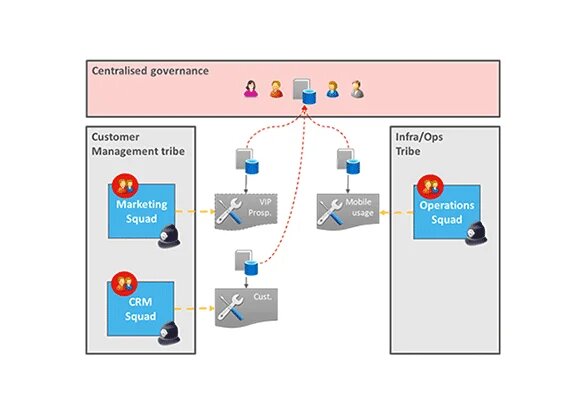
Valorise Data with Data Mesh 3/4
The previous article did a focus on "Data availability and quality". This new one will focus on "Federated computational governance".
A governance tailored at data level
Governance is a set of standards, policies and practice ensuring the quality, accessibility, security, and homogeneity of data within the organisation. How and at which level should governance be defined in the case of data mesh? If the governance is fully centralized it will not take the domain specificities into account, and the squad will lose control over their own data. If the governance is completely decentralized there is a risk for the security of the organization and non homogeneity through the company complicating the common use of information. There is a third approach: a Federated governance. Each squad is responsible for governance of their own data, that way it is tailored to the specifics of their domain. However, data products need to be homogeneous so that they can be integrated with each other. That’s why we still need a general governance to ensure the homogeneity of data as well as defining policies to protect the organization.

The centralised governance should be defined in agreement with all data product owners. The data products owners oversee the governance of their own data, so it will be easier to decide on homogeneity standards. Moreover, if the data products owners are responsible for the general governance, they will apply it with more clarity and efficiency to their domain.
Back to our use case: The Marketing squad has a product owner that will define the governance of their data. This same product owner will take part of defining the general governance with all the other products owners depending on his knowledge of his ow squad data. After clustering data into domains, bringing knowledge, setting policies, and making data products accessible, we need to support all of this with an adapted platform that ease the management of the different entities.
[Data available on a self serve platform will be discussed in the next article]